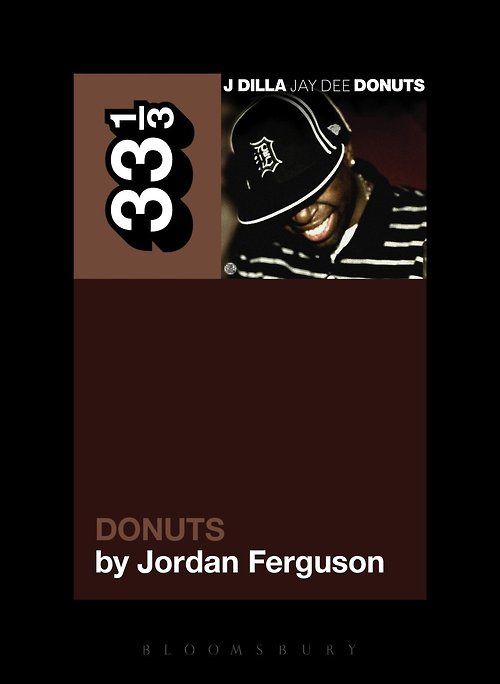Considering I own several volumes of Bloomsbury’s 33 1/3 book series, it’s probably safe to say I’m a fan. If you’re a music fan and not familiar, I strongly suggest you check a couple of volumes out.
 The concept is unique-a series of books, each devoted to analysis of a classic album. With volumes delving into iconic works by everyone from Nas to The Velvet Underground to Celine Dion, there’s something for lovers of every genre and sub-genre. New volumes are solicited and released each year, and this year’s sked brings forth several volumes of particular interest to me. Michael Jackson’s Dangerous and Kanye West’s My Beautiful Dark Twisted Fantasy will both be arriving on bookstore shelves later this year, and one of the most recently released volumes focuses on legendary hip-hop producer and artist J. Dilla’s mash-up masterpiece, Donuts.
The concept is unique-a series of books, each devoted to analysis of a classic album. With volumes delving into iconic works by everyone from Nas to The Velvet Underground to Celine Dion, there’s something for lovers of every genre and sub-genre. New volumes are solicited and released each year, and this year’s sked brings forth several volumes of particular interest to me. Michael Jackson’s Dangerous and Kanye West’s My Beautiful Dark Twisted Fantasy will both be arriving on bookstore shelves later this year, and one of the most recently released volumes focuses on legendary hip-hop producer and artist J. Dilla’s mash-up masterpiece, Donuts.
I’ll preface this review (written by Jordan Ferguson) with my own personal story related to Donuts. Its release (on February 7th, 2006) will always be linked with my friend David, who at the time was a sales manager for Caroline (the company that distributed Stone’s Throw, Dilla’s label.) I got a package from him containing the CD a few days before its release. Within a week of my receiving the CD, not only had Dilla passed away, but David had lost his job (and also went underground/incommunicado for a period of time.) When I’d emailed to thank him for the package (maybe a day or two after receiving it) he asked that I give Donuts a good listen. “It’ll blow your mind,” he said. It did. And even though I had ambivalent feelings towards Dilla’s work at the time (I partially blamed his production influence for the monstrous turd that was A Tribe Called Quest’s Beats Rhymes & Life,) I thought then (and still think now) that Donuts was a work of genius .
The book serves a few purposes: it’s sort of a J. Dilla primer, bringing a casual listener (or a neophyte) up to speed on the Detroit hip-hop music scene, Dilla’s place in the overall hip-hop pantheon, and establishing a well-connected group of kindred spirits, from Questlove to Q-Tip to Detroit DJ House Shoes. Key figures from Dilla’s career are quoted and interviewed, most notably his mother.
The book also delves deep into Dilla’s creative mindset and an obsession with music as crazed as any jazz musician’s. In an age where many of our hip-hop heroes seem to view music almost as incidental to the process of being a star, it’s thrilling to read about someone who had so much of an investment in music. Of course, this volume also explores the dual illnesses (a blood disorder and lupus) that would ultimately cost Dilla his life, and how they affected the creative process (much of Donuts was conceived and recorded in a hospital room) as well as the album’s subject matter. Of course, the creator of the music is not able to confirm, but the question remains: was Donuts intended as a goodbye letter of sorts?
As you can tell, there’s lots to chew on here, and Ferguson frames these topics in a way that’s easy to read and consistently interesting, which is easier said than done. There are quite a few books about music (not to mention several in this very series) that operate from a place that’s far too obtuse and not the least bit relatable. The 33 1/3 volume on Donuts-much like the man who created the album itself-is intelligently composed, but doesn’t sacrifice warmth and approachability at the expense of qualitative worth. Do yourself a favor and cop it.
